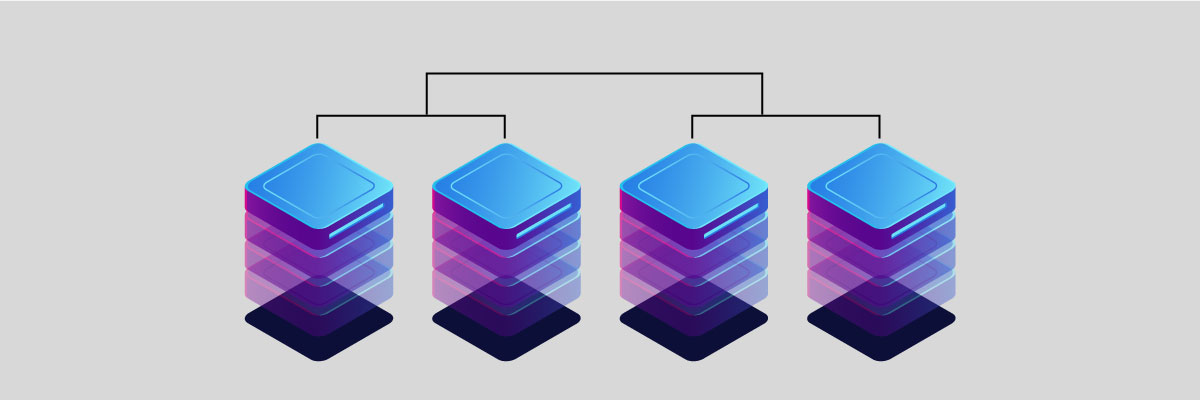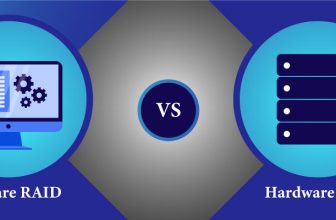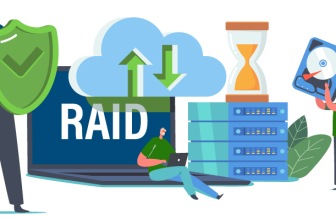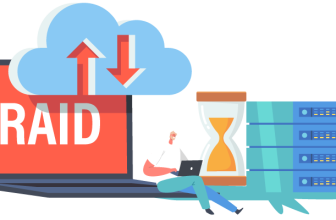Raid Levels Guide: Everything You Need to Know About Raid

What Exactly is Raid? How Does it Work?
RAID or Redundant Array of Independent Disks is a widely used technology and servers often come with support for various RAID types as well as different RAID levels. RAID is basically the technology that lets you store your data on multiple locations such as hard disks or solid-state drives (SDDs).
The working mechanism of RAID is based on the idea that a multitude of disks forming an array in unison will work together with enhanced acceleration and reliability. Also, the array of these inexpensive disks will cost less than a more expensive single larger disk. With disk mirroring and stripping, multiple RAID levels in storage are achieved via copying and partitioning the data.
What are the Various Types of Raids?
In order to understand RAID concepts in storage, it is imperative to look at various RAID types- RAID 0 (stripping), RAID 1 (mirroring), RAID 5 or 6(stripping and RAID parity), RAID 10 (stripping and mirroring). These types all differ in terms of the number of drives required and their choice will depend on your need for speed and data reliability.
Hardware Raid
Hardware RAID refers to the array of independent disks wherein the processing is done on the motherboard. In this case, the execution of RAID is done with the help of specialized controllers in the servers. The subsystem here is managed independently of the host.
Software Raid
Software RAID entails a variety of RAID levels in the block device code. In this case, the processing is performed on the server internally. In this type, the operating system-based faculties are leveraged to work on the RAID services and deliver them. Because of high-performance processing units, software RAID is often preferred by users.
Which Raid Levels are the Most Popular on the Market?
While each and every RAID level offers its unique advantages as well as certain cons, RAID 5 gets the highest RAID points being the most preferred one in the market, and the most secure one. The characteristics of RAID 5 such as optimized storage along with enhanced efficiency make it a favorite amongst server users.
Raid 0
Known as the Stripping level, here one can take any number of disks and merge them together. A large volume array of drives is created, enhancing speed and capacity. Usually, RAID 0 is used for cache, however, not on occasions wherein data reliability is paramount.
Raid 1
RAID 1 is referred to as Mirroring and here the data is copied as it is on multiple drives of the array. A pair of identical disks are used in RAID 1 scenario and this level is capable of complex configurations. The benefit of having two disks is increased data reliability in case one disk breaks down.
Raid 5
As mentioned earlier, this one is the most popular level in the market. At least 3 drives are needed here. The data is stripped and parity information is distributed across the multiple disks. RAID 5 requires a dedicated hardware controller and it is useful in enhancing read performance.
Raid 6
Similar to RAID 5, RAID 6 is also a level of stripping and distributed RAID parity. In this double-parity level, there is a need for a minimum of 4 drives. This option is preferred for standard web servers along with general-purpose IT environments. This level too needs a dedicated hardware controller.
Raid 10
Similar to RAID 6, this level also requires a minimum of 4 drives. RAID 10 is basically a combination of mirroring and stripping. (RAID 1 and RAID 0. That means that you can achieve speed as well as redundancy with this level. Because of its dual features, this level is recommended by technical experts.
What is the Importance of Raid?
First and foremost, RAID is a highly cost-effective way of enhancing speed, increasing read and write performance, and getting better data reliability. Instead of having to spend on a large disk (single), multiple inexpensive disks are used in the RAID technology.
RAID also significantly reduces the risk of disk failure since you have multiple options available at all times. This makes RAID very important for businesses that want to have excellent server uptime. The increased resilience that is brought in by RAID 5 helps companies in having their data available even in case of one disk’s failure.
How Do I Choose the Right Raid for My Business? When Should I Use it?
The choice of RAID level will depend on your business requirements and the type of workload. However, you must use RAID if you are looking for better uptime, increased speed, cost-effectiveness, and enhanced data management and reliability.
Based on your application, you must decide what is the most important thing for you- data redundancy, increased speed, effective costing, greater performance, or high storage capacity. The aforementioned RAID levels all serve one or more of these functions and based on your requirement, you can take the call.
Conclusion
In order to get better storage, speed, and reliability of data- all at a cheaper rate, RAID should be your go-to option. You can take the help of technical experts before choosing the RAID configuration for your organization. Study the options in detail and make use of this advanced technology for your benefit.







